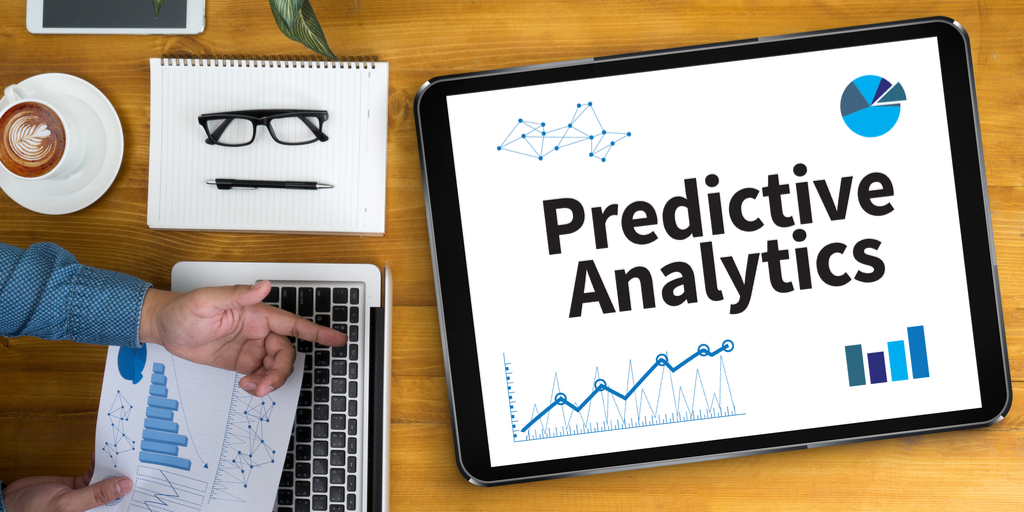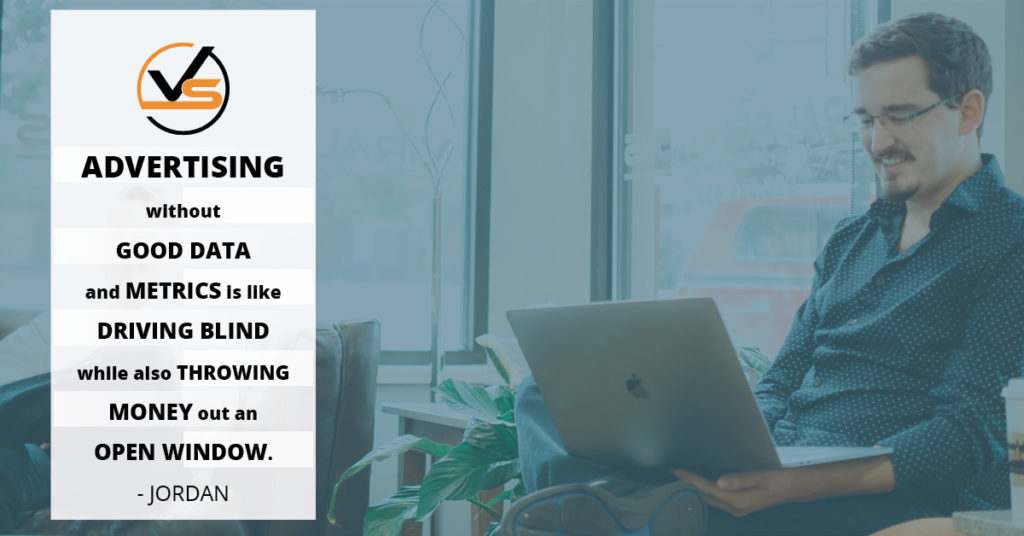
The Smart and Safe Approach to Predictive Analytics
You’re a walking disk of data, and so are your customers.
As marketers, we love that, right?
With almost nothing analog left in the U.S. and cloud-based storage of customer information being so cheap, data is being collected all over the place in massive amounts.
What if you could use the data you’ve collected (possibly without even knowing it) to make predictions about your business and ensure your outcomes are more on target?
You absolutely can with predictive analytics.
What Are Predictive Analytics?
Predictive analytics are… well, just what they sound like. It’s using existing data to discover patterns and trends that help businesses make predictions about future outcomes. It’s like a weather forecast for your company, helping you know whether you should bring an umbrella or cancel the event altogether.
Predictive analytics uses probabilities, what-if scenarios, and risk assessments in an organized fashion to propel a certain outcome. Here’s how it works:
- Historical data is uploaded into predictive algorithms that take certain trends and patterns into account and come up with a model.
- Then that model is applied to the current data to make predictions about the future.
- Those predictions are then used to make more informed decisions that result in better outcomes.
By analyzing a company’s historical data and applying machine learning and artificial intelligence, predictive analytics helps them identify risks, opportunities, and competitive advantages to improve operations, increase revenues, and better serve their customers.
Who’s Using Predictive Analytics?
Research by Dresner Advisory Services found that while only about 23% of businesses are actively using predictive analytics, an additional 51% are looking to use it in the future. We are at the beginning of what is sure to be a massive development in marketing analytics. There are almost no limits anymore.
Some of the big guys that are leveraging predictive analytics include the following:
- Netflix – They use their customer viewer data to predict what movies and shows will be successful.
- Match.com – They use data to predict romantic matches.
- Facebook – They use data to predict user preferences that allow marketers to run successful ads on their platform.
Ways Predictive Analytics Can Be Applied in Marketing
In terms of application, the possibilities are endless with predictive analytics. But let’s dive into some examples of how other companies are using this technology:
- Predict Buying Behavior – Gather data from a loyalty program to predict what offers your customers are more likely to use in the future and anticipate which of your customers will purchase upsells or cross-sells.
- Drive Better Outcomes – Determine what advertising methods will be most effective and what campaigns, channels, touchpoints, behaviors, and demographics contribute to conversions.
- Personalized Website Experience – Look at customer browsing behaviors to create a more engaging, personalized experience for the user.
- Revenue Predictions – Predict how many purchases you will receive and how much money you will make in a future time period.
- Customer Predictions – Predict which customers will have the best lifetime value and what your customer retention rates will look like.
- Customer Service – Determine how many customers are likely to be using your service at a certain time so that you can increase staff as needed.
Predictive Analytics Options
Okay, so obviously predictive analytics presents an incredible opportunity, but it’s tricky when it comes to gathering all of the relevant data into something that is easy to interpret and use.
Unless you’re a tech company, you’re probably not developing your own algorithms. So here are your choices: You either purchase existing software, or you hire an agency.
Software
Purchasing existing software that you can adapt to meet your needs is a solution that matches high-level expertise with a DIY component. Pricing varies greatly depending on the number of users and/or the amount of data. At minimum, it starts around $1,000 per year, and it can go up into hundreds of thousands of dollars.
Here are some software companies to look at:
- SAS’s Advanced Analytics
- IBM’s SPSS Statistics
- Microsoft Dynamics CRM Analytics Foundation
- RStudio
- And here are 20 of the best predictive analytics software for 2019
Agencies
Software is definitely helpful, but it isn’t without its limits because the data must be formatted, nodes must be linked, and visualizations must be developed. All of these things require a major learning curve and a ton of time.
That’s why it often pays to hire an agency to create a predictive analytics model for you. They’ll analyze your data and put it into a useable format for you. Plus, it’ll be more customized to your needs, and an outside perspective is always good.

Steps to Create a Predictive Analytics Campaign
Whether you want to use software or an agency to get started with predictive analytics, it’s always helpful to have a good grasp on how it works. From a simplistic standpoint, here’s how it plays out:
- Choose the Insight – First you need to know what you want to know. What are the most important questions you want answers to? What would greatly improve your business and revenue if you had a crystal ball?
- Acquire the Data – Do you have the raw material to create that prediction? In other words, do you have the data you would need to gain the insight you are seeking? Are you currently collecting that data? Also, consider…
- How clean is the data?
- How long have you been collecting that data?
- Do you have enough of the data to make an analysis?
- Create the Algorithm – Now you need to create the model that will make the prediction you are looking to gain. Your system needs to now learn from the data it has gained, and you need to create the algorithm that will allow it to do that.
- Plan the Campaign – Once you have the predictions, you need to have a campaign in place and be ready to rock ‘n’ roll once the insights start rolling in.
Here’s Where You Need to Be Careful
All you need to do is get the software or hire an agency and BOOM, your business is gonna transform, right? If only it were that simple.
Data is amazing. It is literally paving the future as software companies come up with more and more ways to use it to our advantage. But, it’s also dangerous.
We all deserve privacy, and with all the data that is collected on us in this digital age, much of that privacy is going by the wayside.
As marketers, we gain the most from customer data because it allows us to address people at the right time in the right place for the right need. But with great reward comes great risk, and you have to remember that managing customer data is a huge responsibility.
If you follow these 3 tips, you’ll be doing it right:
Say No
It is important to protect your company and know that you are responsible for any misuse of data that originated with your company. That means if you are sharing data with a partner and they use it poorly, it will come back to you. So be very careful with whom you share your data, and don’t share it at all if there is another way.
Think of Your Customers as Friends
Don’t think of your customer data as merely data. Think of each record as a dear friend, and then ask yourself how you would treat that friend. Things can get a little creepy for customers when companies over-personalize. Think of it like this: Would you make that recommendation to a dear friend because you know them and what they like, or would that recommendation come from you snooping through their drawers?
Be Transparent
If you bury the fact that your customers “gave you permission” to use their data in your Terms of Service, you’re being shady, and it makes a sleazy impression. Instead, make it front and center, and always give them an out if they decide they don’t want you to have their data.
To learn more about protecting personal information, follow the PPI Guidelines set up by the FTC.
In Conclusion
Through predictive analytics, companies can use the data that comes from their CRM systems, social media aggregators, logistics, and purchasing systems to understand their customer in a forward-thinking perspective. It’s a transformative solution that will definitely give your company an edge over your competitors, especially this early in the game.
Something as new and big as this can feel overwhelming, but it’s easy to get your feet wet with a small solution.

